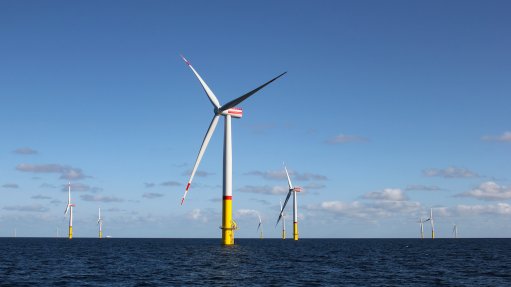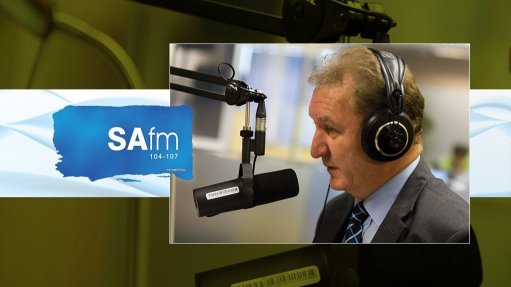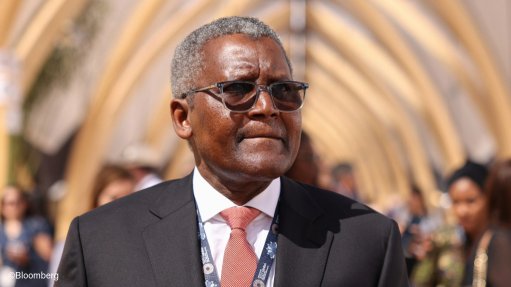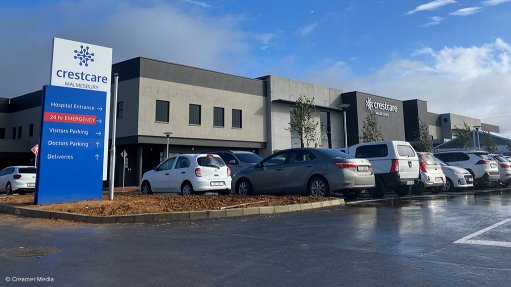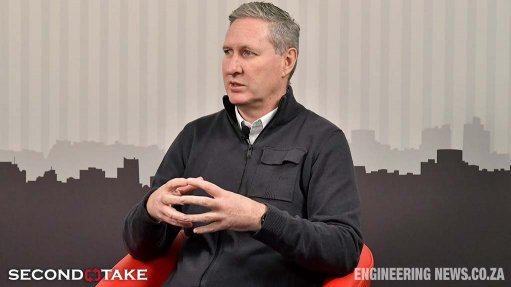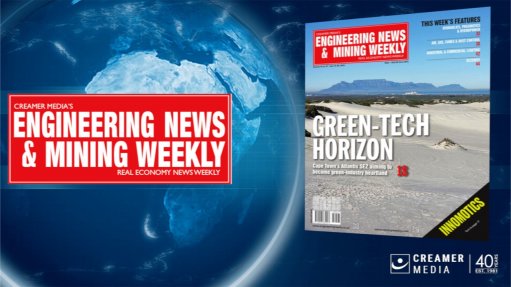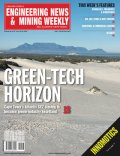Stone-laying for pioneering Middle Eastern gas project
Unique South African technology is being used in one of the world’s gas-rich regions, Qatar, in the Arabian Gulf.
The advanced technology is proprietary to South Africa’s 50-year-old petrochemicals company Sasol.
The location of the stone-laying function, which will signal the official start of full-scale construction of the Oryx plant, is the construction site at Ras Laffan, the impressive Qatari industrial port city.
Some $950-million is being in-vested in Oryx, which will have an output of 33 000 barrels-a-day (bbd) of a special, superior diesel that has been described as ‘green’ because of its environment-friendliness and superiority because of its high cetane number and lubricity.
Qatar Petroleum, a State-owned enterprise that is a 51% shareholder, and Sasol, which holds 49%, are the investors in the project that has proved eminently bankable, Sasol raising $700-million for it in a mere 36 hours (Engineering News May 23–29, 2003).
All told, with the Royal Bank of Scotland acting as financial adviser, 15 banks, syndicated to six more banks, are each lending $50-million at favourable interest rates. Executive director Pat Davies is championing Sasol’s foray into GTL, which is expected to be one of the company’s main growth drivers going forward.
Davies tells Engineering News in an interview at the company’s corporate office in Johannesburg that preliminary site preparation has already begun on site in Qatar, where the European company Technip-Coflexip has been appointed engineering procurement and construction (EPC) contractor.
Detailed engineering design is being undertaken in Rome and commissioning is scheduled for December 2005.
Natural gas for the project is available offshore of Ras Laffan and will be piped to the proposed onshore plant. There is an abundant supply of natural gas available and this has already resulted in the discussion of plans to quadruple the size of the plant to 120 000 bbd, even before the initial 33 000 bbd plant has been built – another sign of the confidence in the future of GTL fuel ahead of new low-sulphur diesel regulations.
The presentation of the latest plans for additional capacity have come about in res-ponse to Qatar Petroleum’s request for consideration to be given for the construction of an even larger greenfields GTL plant to be back-wardly integrated into the gasfield.
The capacity boost would give Sasol an opportunity to become involved in the entire value chain, beginning upstream with the extraction of gas from the North Field, continuing with the mid-stream processing into natural gas liquids and finally establishing a 120 000 bbd GTL plant, which approaches the magnitude of the 150 000 bbd plant at Secunda in South Africa.
Sasol, through Sasol Chevron, is also involved in the establishment of a similar venture in Nigeria. It is planned to enter the EPC phase of what will be the company’s second GTL plant.
The Nigerian project was, in fact, meant to be Sasol’s first GTL project but, owing to delays, Qatar has overtaken Escravos, which will now come on stream in 2007, producing 34 000 bbd.
One of the reasons for the delay is that the plant has been located on a swamp and 3,2-million cubic metres of sand have had to be placed on the site as part of surface preparation.
By 2012, Sasol has a target to produce, with its partners, 500 000 barrels of GTL a day, which would give it approximately a 4% share of the world diesel market.
Although Sasol’s ‘green’, high-cetane diesel should attract a price premium, the company did not rely on receiving a price premium to justify the economic viability of its two ventures.
It is, however, making considerable use of the expertise within the Sasol group itself, Sasol Chevron and consultants to capture the maximum premiums in negotiating forward sales.
Davies sees two main markets, the first being blend markets and the second niche markets. In niche markets, the GTL fuel would be used in its own right in situations of special commit-ment to the meeting of new clean-fuel regulations, for example, as fuel for the entire bus fleets of large cities committed to minimising exhaust emissions.
Simultaneously, there are expected to be blending opportunities at refineries that are investing to clean their fuels, but downgrade certain fuel streams in the process of upgrading others.
In such instances, the GTL fuel can be blended with the downgraded diesel in order to enable it also to meet the new clean-fuel specifications, which will be enforced in Europe, in particular from 2005, when the Qatar plant begins producing.
In this way, the GTL fuel offers an opportunity to conventional refiners to add value to their stranded streams and Sasol expects to gain a price premium for being able to facilitate such value addition.
It will not be working with any one refinery in this respect and all refineries are seen as potential customers.
Though Davies expects strong competition from rival petroleum companies, he believes competitors will find it difficult to attain from crude oil the unique properties of Sasol’s GTL fuel, whose initial cost of daily barrel of capacity installed has declined markedly.
When Sasol first began designing the plants, capital expenditure was at a level of more than $30 000 per daily barrel of capacity installed.
This has since decreased to $25 000 and Davies expects a further decline in the next five years to $20 000.
In addition to directing Sasol’s GTL business, Davies leads Sasol’s oil and gas activities, both locally and internationally, and will take over the technology mantle when present incumbent Jan Fourie retires at the end of this year.
It was under his direction that Sasol Petroleum International (SPI) began exploiting gas in Mozambique, which resulted in the building of the 1 000 km R10-billion pipeline from Temane to Secunda and Sasolburg, the latter converting to full use of natural gas by mid-2004.
SPI is active off the west coast of South Africa, where it is undertaking seismic work, has oil-producing assets in Gabon and interests in southern Gabon, Equatorial Guinea and Nigeria.
SPI has an agreement with Chevron Texaco covering the deep water of the west coast of Africa.
The two companies invite one another to invest in each other’s ventures, which is how SPI obtained its shareholdings in Equatorial Guinea and Nigeria.
On the west coast of Africa and South Africa, SPI is looking primarily for offshore oil and off the west coast of South Africa and in Mozambique it is exploring primarily for gas.
Davies describes SPI’s strategy as one of exploiting its sources of competitive advantage and focusing on certain geographic areas.
It uses Sasol’s GTL uniqueness as a calling card for audiences with the governments of countries that are flaring gas or have stranded-gas assets. SPI focuses most intensively on opportunities that have the potential to feed into the rest of Sasol’s value chain, as has occurred with the Mozambique gas project, which was rendered economically viable by Sasol providing the anchor load for the gas in South Africa.
Similarly, when SPI becomes involved upstream of GTL, Sasol value chain opportunities can be fully exploited.
Comments
Press Office
Announcements
What's On
Subscribe to improve your user experience...
Option 1 (equivalent of R125 a month):
Receive a weekly copy of Creamer Media's Engineering News & Mining Weekly magazine
(print copy for those in South Africa and e-magazine for those outside of South Africa)
Receive daily email newsletters
Access to full search results
Access archive of magazine back copies
Access to Projects in Progress
Access to ONE Research Report of your choice in PDF format
Option 2 (equivalent of R375 a month):
All benefits from Option 1
PLUS
Access to Creamer Media's Research Channel Africa for ALL Research Reports, in PDF format, on various industrial and mining sectors
including Electricity; Water; Energy Transition; Hydrogen; Roads, Rail and Ports; Coal; Gold; Platinum; Battery Metals; etc.
Already a subscriber?
Forgotten your password?
Receive weekly copy of Creamer Media's Engineering News & Mining Weekly magazine (print copy for those in South Africa and e-magazine for those outside of South Africa)
➕
Recieve daily email newsletters
➕
Access to full search results
➕
Access archive of magazine back copies
➕
Access to Projects in Progress
➕
Access to ONE Research Report of your choice in PDF format
RESEARCH CHANNEL AFRICA
R4500 (equivalent of R375 a month)
SUBSCRIBEAll benefits from Option 1
➕
Access to Creamer Media's Research Channel Africa for ALL Research Reports on various industrial and mining sectors, in PDF format, including on:
Electricity
➕
Water
➕
Energy Transition
➕
Hydrogen
➕
Roads, Rail and Ports
➕
Coal
➕
Gold
➕
Platinum
➕
Battery Metals
➕
etc.
Receive all benefits from Option 1 or Option 2 delivered to numerous people at your company
➕
Multiple User names and Passwords for simultaneous log-ins
➕
Intranet integration access to all in your organisation







